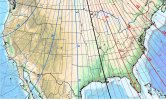Everywhere I look I seem to find a different order in which to perform the three calibrations.
I contacted Autel yesterday, seeking a definitive response.
TL;DR
> IMU, Gimbal, Compass
Long version:
I contacted Autel yesterday, seeking a definitive response.
TL;DR
> IMU, Gimbal, Compass
Long version:
Thank you for contacting Autel Robotics Support.
When users power on the aircraft, it does an IMU calibration, but it only calibrates the gyroscope offset and accelerometer bias. When the aircraft is on the ground, the bias value is less accurate. If users take off the aircraft from a non-static surface, this IMU calibration may not work properly. The new comprehensive IMU calibration collects 6-axis measurement data based on the current sensor status and gives the IMU a manual correction. The calibrated data is more accurate.
When do users need to perform an IMU, Gimbal, and/or Compass Calibration?
When you receive your Evo II unit for the first time, we suggest performing all three calibrations in this order: IMU, Gimbal, then Compass.
After that, we suggest that users perform the IMU, gimbal, and compass calibrations if they experience unstable flights, gimbal drifts, sideways flight, and/or non-straight flight paths.
Best,
Jay S
Customer Service Agent
www.AutelDrones.com
844.692.8835





